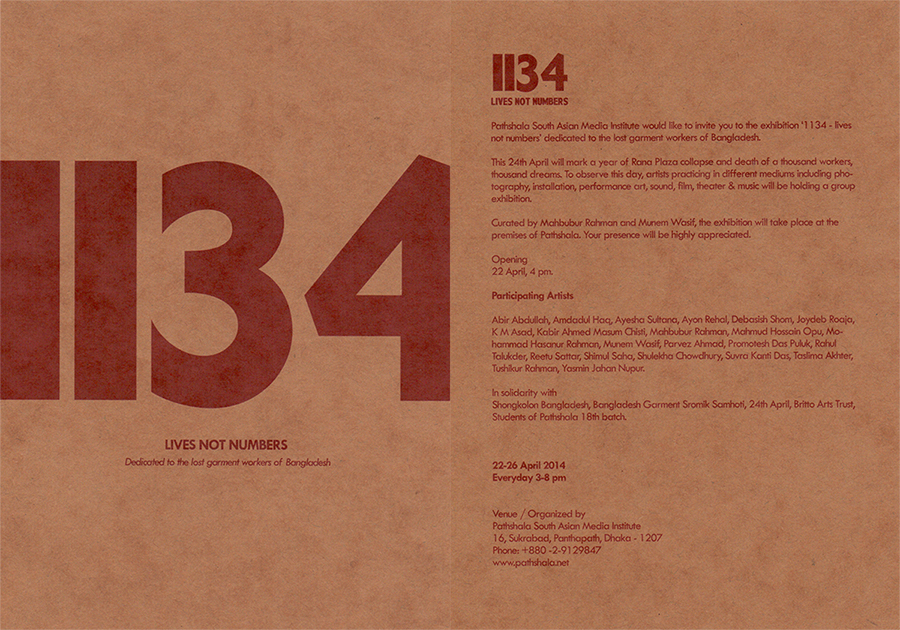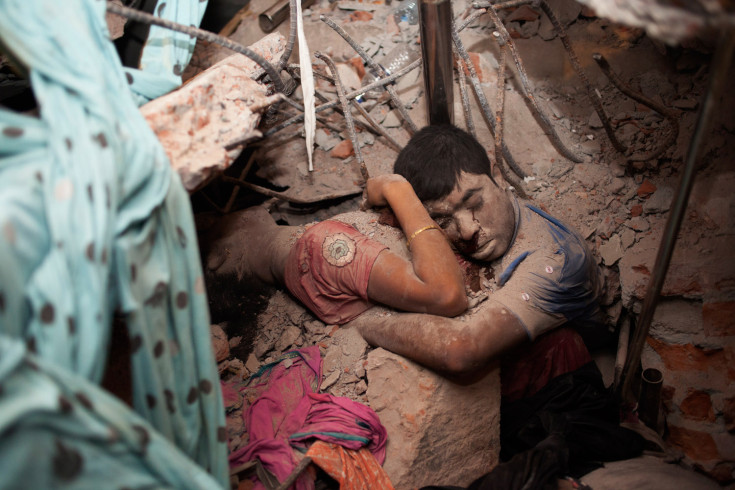Category: Capitalism
Where will India's poor go?
?The massive, steeply climbing GDP of India dropped rather suddenly and millions of middle-class people sitting in the aircraft, waiting for it to take off, suddenly found it freezing in mid-air,? says Ms Roy. ?Their exhilaration turned to panic and then into anger. Modi and his party have mopped up this anger.? Continue reading “Where will India's poor go?”
1134 "lives not numbers" The exhibition
1134 – lives not numbers
A group exhibition dedicated to the lost garment workers of Bangladesh.
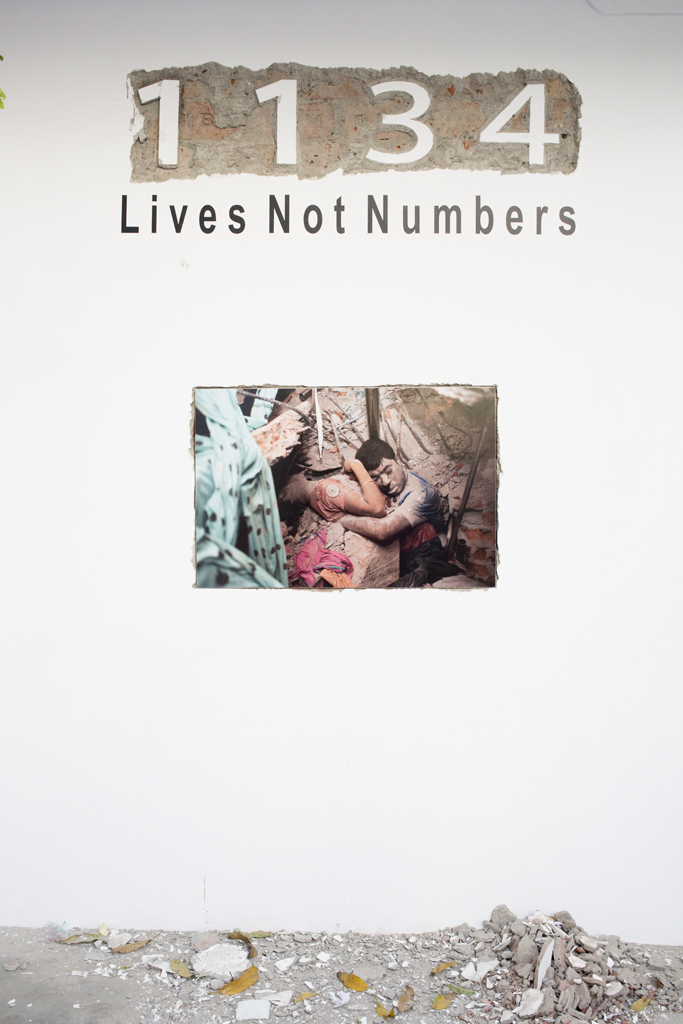
Still haunted by the memories. When I close my eyes I see the procession of corpses, following me behind, taunting my sense of responsibility. 24th April, 2013, Rana Plaza collapses, 1134 lost to senseless greed, lives lost due to collective negligence. A dark day in the history of garments workers lives, a nightmare which will terrorize us for the rest of our lives.? Amongst the rubble, hidden beneath the stones, beams and bricks, thousands of workers lie enveloped in darkness, their dreams crushed under the weight of our negligence.
Who needs facts? We appear to be in the Post-Information Age now
Evidence? Ha. That’s for humanists, scientists and who knows what other dangerous?ists. It’s all about how we feel now
 Bob Garfield?Guardian
Bob Garfield?Guardian
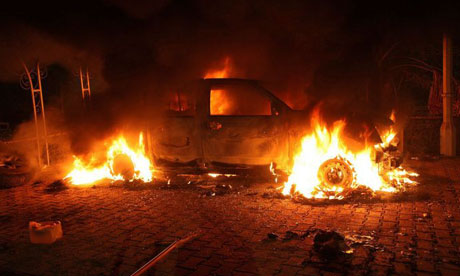
Silver threads, frayed seams
Until
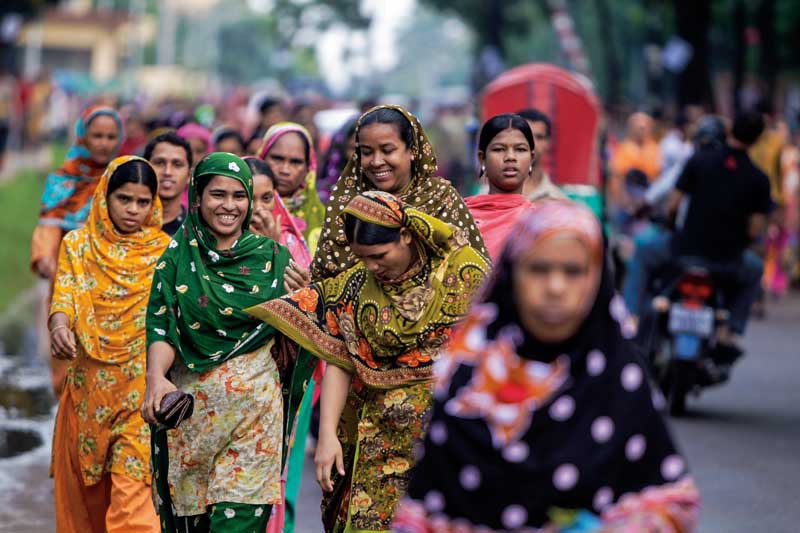
Continue reading “Silver threads, frayed seams”
Hollywood Without the Happy Ending
How the CIA Bungled the War on Terror?
By?Pratap Chatterjee
Call it the Jason Bourne strategy.
Think of it as the CIA?s plunge into Hollywood — or into the absurd.? As recent revelations have made clear, that Agency?s moves couldn?t be have been more far-fetched or more real.? In its post-9/11 global shadow war, it has employed both private contractors and some of the world?s most notorious prisoners in ways that leave the latest episode of the Bourne films in the dust: hired gunmen trained to kill as well as former inmates who cashed in on the notoriety of having worn an orange jumpsuit in the world’s most infamous jail. Continue reading “Hollywood Without the Happy Ending”
The Trial of Tony Blair
Channel 4. 2007
A very well made film. Fiction, but too close to the truth to be comfortable. I can’t believe this film hasn’t gone viral. Are people even scared of watching a spoof? C’mon folks. Share this widely.?
The message sent by America?s invisible victims
As two more Afghan children are liberated (from their lives) by NATO this weekend, a new film examines the effects of endless US aggression
The Blood Telegram: Nixon, Kissinger and a Forgotten Genocide.
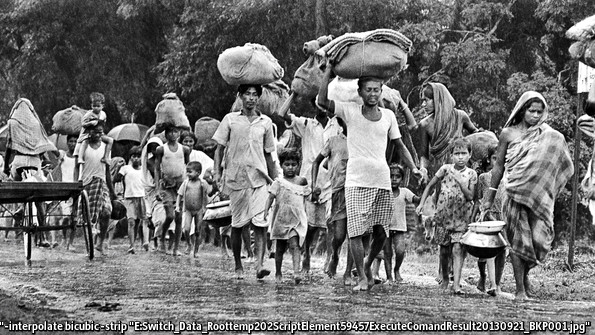
?By Gary Bass. The Economist
UNTIL 1971 Pakistan was made up of two parts: west and east. Both Muslim-dominated territories were born out of India?s bloody partition 24 years earlier, though they existed awkwardly 1,600km apart, divided by hostile Indian territory. Relations between the two halves were always poor. The west dominated: it had the capital, Islamabad, and greater political, economic and military clout. Its more warlike Pashtuns and prosperous Punjabis, among others, looked down on Bengali easterners as passive and backward. Continue reading “The Blood Telegram: Nixon, Kissinger and a Forgotten Genocide.”



